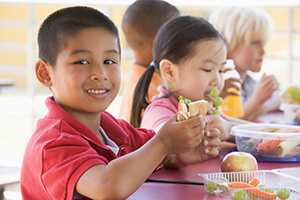It's in the bag (lunch)!
School is back in session — so it’s a good time for everyone to get educated on the dos and don’ts when working with perishable food.
It doesn’t take much for foods to spoil. When food warms up to 40 degrees and higher — harmful bacteria, like salmonella, can begin multiplying rapidly.
Whether you are packing bag lunches for your kids, spouse or for yourself, here are some quick packing tips from the USDA to help everyone get an A at lunchtime.
1. Prepare your cold sources! When kids sit down to do their homework, that’s when parents should be doing their after-school assignment, too! Place frozen gel packs in the freezer overnight. If it makes it easier, buy additional gel packs — so you’ll always have at least one ready.
It is recommended that bag lunches have two cold sources. This can be two frozen gel packs or combine a frozen gel pack with a frozen juice or bottle of water.
2. Know your foods that don’t require a cold source. Whenever in doubt about how long lunches will be stored or if refrigeration will be provided, you can’t go wrong when packing these foods. They include:
- whole fruits and vegetables
- hard cheese
- canned meat and fish
- chips
- breads
- crackers
- peanut butter (or a nut-free spread, depending on your school’s rules)
- jelly
- mustard
- pickles
Be aware that prepackaged lunches you buy at the grocery store might include some of these nonperishable items, however they may also contain perishable items that must be kept refrigerated, such as meats or cut fruit.
3. Neatness counts! Creating healthy lunches involves more than just selecting the right foods. They also need to be prepared the right way. Wash your hands with soap and water before preparing foods. Use clean cutting boards. Wash cutting boards, dishes, utensils and countertops between food items to prevent cross contamination.
Short on ideas? Browse our list of healthy suggestions
Once you have reviewed the storage and preparation rules, now make sure to choose healthy main dishes and sides. Here are a few ideas to get you started.
- Yogurt with berries and nuts or dried cereal
- Cheese and crackers
- Sliced veggies (carrots, celery, cucumbers, cherry tomatoes) with a side of dressing, guacamole or hummus
- Fresh fruit and cottage cheese
- Hard-boiled eggs
- Egg, chicken or tuna salad sandwich on bread, a wrap or bagel
- Taco salad with black beans
- Baked potato with cheese and broccoli
- Cold pasta salad
- Soup or stew in a thermos, keeping at 140 degrees or above.
